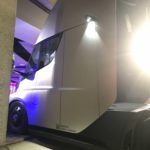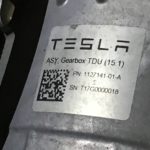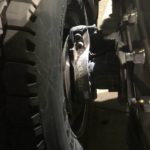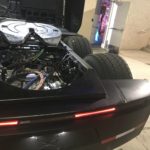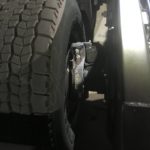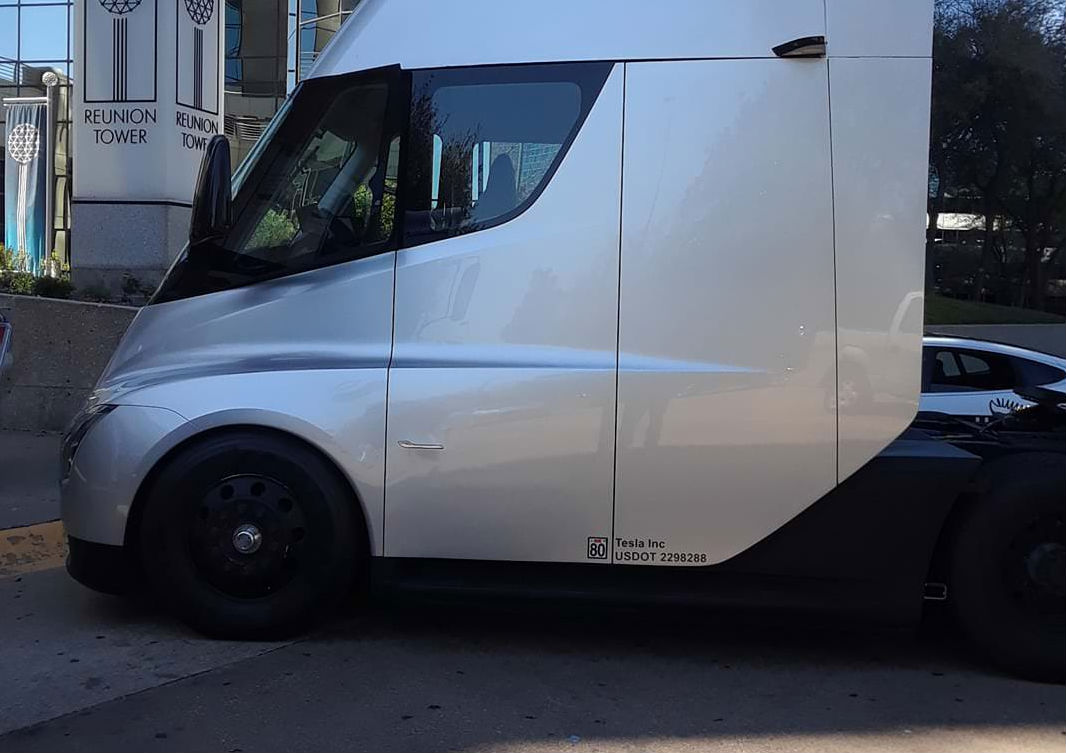
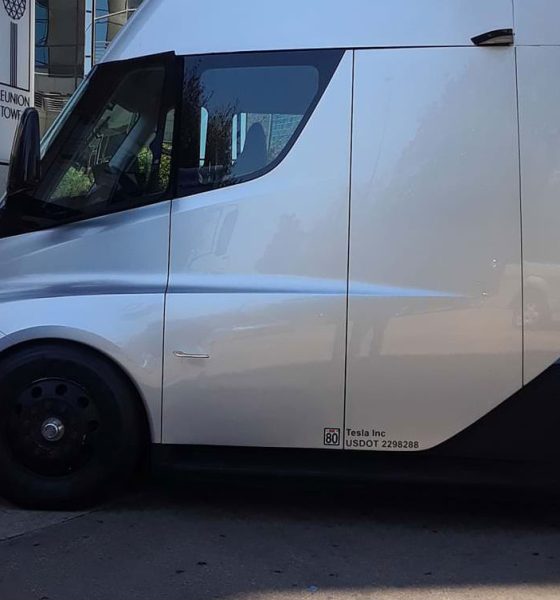
News
Tesla showcases Semi truck to PepsiCo employees in private event
After making an appearance at the Dallas Service Center, the Tesla Semi was spotted at a private demo event for PepsiCo employees at Reunion Tower, one of the city’s landmarks. The gathering was reportedly a demo of the electric truck for the snack and beverage company, which had placed orders for 100 Semis back in December.
Reports of the electric truck being spotted at Reunion Tower emerged in the forum community on Tuesday night, with several Texas-based members of the r/TeslaMotors subreddit sharing images of the vehicle as it was parked in front of the building. Ryan O’Donnell, one of the subreddit’s members, was able to check out the Semi as it was being showcased to PepsiCo’s employees. According to O’Donnell, the gathering was very small and private, with only around 200-300 people being present as Tesla gave a demo of the electric truck.
O’Donnell was able to capture almost a dozen close-up photographs showing the Tesla Semi’s four Model 3-based electric motors, its brakes, and its incredibly low ground clearance. The Elon Musk-led firm was very careful about the tech inside the electric long-hauler, however, as no photos of the truck’s twin displays, its navigation system, or its battery information were allowed to be taken.
Nevertheless, O’Donnell’s images of the Tesla Semi’s exterior and motors are among the most detailed ones yet. A gallery of these pictures could be found below.
- The Tesla Semi shows up at a private demo for PepsiCo employees at Dallas, TX. [Credit: Ryan O’Donnell/Imugr]
- The Tesla Semi shows up at a private demo for PepsiCo employees at Dallas, TX. [Credit: Ryan O’Donnell/Imugr]
- The Tesla Semi shows up at a private demo for PepsiCo employees at Dallas, TX. [Credit: Ryan O’Donnell/Imugr]
- The Tesla Semi’s low ground clearance. [Credit: Ryan O’Donnell/Imugr]
- The Tesla Semi shows up at a private demo for PepsiCo employees at Dallas, TX. [Credit: Ryan O’Donnell/Imugr]
- A closer look at one of the rear wheels of the Tesla Semi. [Credit: Ryan O’Donnell/Imugr]
- The Tesla Semi shows up at a private demo for PepsiCo employees at Dallas, TX. [Credit: Ryan O’Donnell/Imugr]
- The Tesla Semi shows up at a private demo for PepsiCo employees at Dallas, TX. [Credit: Ryan O’Donnell/Imugr]
- The Tesla Semi shows up at a private demo for PepsiCo employees at Dallas, TX. [Credit: Ryan O’Donnell/Imugr]
- The Tesla Semi shows up at a private demo for PepsiCo employees at Dallas, TX. [Credit: Ryan O’Donnell/Imugr]
As we noted in a previous report, the Tesla Semi’s appearance in Dallas, TX, appears to be part of the electric car and energy company’s initiative to showcase the electric truck to some of its clients. PepsiCo, after all, has several facilities in the region, including the corporate headquarters of Frito-Lay, the company’s snack food subsidiary. PepsiCo Sr. Director of Environmental Sustainability Al Halvorsen, who plays a huge part in the company’s current green initiatives, is also based in Dallas.
With Halvorsen at the lead, PepsiCo’s green projects have achieved several milestones over the past few years, such as the company’s Frito-Lay facility in Casa Grande, AZ becoming a “Near Net Zero” manufacturing plant, recycling up to 75% of its water and using up to 80% less gas. With this in mind, PepsiCo’s reservations for the Tesla Semi, a potential disruptor in the transportation industry, is well in line with the company’s current environmentally-friendly initiatives.
If any, the initial orders for the Tesla Semi are reportedly just the start of PepsiCo’s transition to a fully sustainable fleet of delivery vehicles. According to O’Donnell, one of the PepsiCo employees he was able to speak with during the demo event remarked that the 100 orders for the Semi were just “a drop in the bucket” for how many units the company is looking to order in the future.
The Tesla Semi recently visited another one of its biggest buyers last week as well, with the electric long-hauler making an appearance at Anheuser-Busch’s brewery in St. Louis, MO. Just like PepsiCo, Anheuser-Busch has also committed to the Tesla Semi, ordering 40 electric trucks from the Elon Musk-led company.

News
Tesla (TSLA) receives “Buy” rating and $551 PT from Canaccord Genuity
He also maintained a “Buy” rating for TSLA stock over the company’s improving long-term outlook, which is driven by autonomy and robotics.

Canaccord Genuity analyst George Gianarikas raised his Tesla (NASDAQ:TSLA) price target from $482 to $551. He also maintained a “Buy” rating for TSLA stock over the company’s improving long-term outlook, which is driven by autonomy and robotics.
The analyst’s updated note
Gianarikas lowered his 4Q25 delivery estimates but pointed to several positive factors in the Tesla story. He noted that EV adoption in emerging markets is gaining pace, and progress in FSD and the Robotaxi rollout in 2026 represent major upside drivers. Further progress in the Optimus program next year could also add more momentum for the electric vehicle maker.
“Overall, yes, 4Q25 delivery expectations are being revised lower. However, the reset in the US EV market is laying the groundwork for a more durable and attractive long-term demand environment.
“At the same time, EV penetration in emerging markets is accelerating, reinforcing Tesla’s potential multi‑year growth runway beyond the US. Global progress in FSD and the anticipated rollout of a larger robotaxi fleet in 2026 are increasingly important components of the Tesla equity story and could provide sentiment tailwinds,” the analyst wrote.
Tesla’s busy 2026
The upcoming year would be a busy one for Tesla, considering the company’s plans and targets. The autonomous two-seat Cybercab has been confirmed to start production sometime in Q2 2026, as per Elon Musk during the 2025 Annual Shareholder Meeting.
Apart from this, Tesla is also expected to unveil the next-generation Roadster on April 1, 2026. Tesla is also expected to start high-volume production of the Tesla Semi in Nevada next year.
Apart from vehicle launches, Tesla has expressed its intentions to significantly ramp the rollout of FSD to several regions worldwide, such as Europe. Plans are also underway to launch more Robotaxi networks in several more key areas across the United States.
News
Waymo sues Santa Monica over order to halt overnight charging sessions
In its complaint, Waymo argued that its self-driving cars’ operations do not constitute a public nuisance, and compliance with the city’s order would cause the company irreparable harm.

Waymo has filed a lawsuit against the City of Santa Monica in Los Angeles County Superior Court, seeking to block an order that requires the company to cease overnight charging at two facilities.
In its complaint, Waymo argued that its self-driving cars’ operations do not constitute a public nuisance, and compliance with the city’s order would cause the company irreparable harm.
Nuisance claims
As noted in a report from the Los Angeles Times, Waymo’s two charging sites at Euclid Street and Broadway have operated for about a year, supporting the company’s growing fleet with round-the-clock activity. Unfortunately, this has also resulted in residents in the area reportedly being unable to sleep due to incessant beeping from self-driving taxis that are moving in and out of the charging stations around the clock.
Frustrated residents have protested against the Waymos by blocking the vehicles’ paths, placing cones, and “stacking” cars to create backups. This has also resulted in multiple calls to the police.
Last month, the city issued an order to Waymo and its charging partner, Voltera, to cease overnight operations at the charging locations, stating that the self-driving vehicles’ activities at night were a public nuisance. A December 15 meeting yielded no agreement on mitigations like software rerouting. Waymo proposed changes, but the city reportedly insisted that nothing would satisfy the irate residents.
“We are disappointed that the City has chosen an adversarial path over a collaborative one. The City’s position has been to insist that no actions taken or proposed by Waymo would satisfy the complaining neighbors and therefore must be deemed insufficient,” a Waymo spokesperson stated.
Waymo pushes back
In its legal complaint, Waymo stated that its “activities at the Broadway Facilities do not constitute a public nuisance.” The company also noted that it “faces imminent and irreparable harm to its operations, employees, and customers” from the city’s order. The suit also stated that the city was fully aware that the Voltera charging sites would be operating around the clock to support Waymo’s self-driving taxis.
The company highlighted over one million trips in Santa Monica since launch, with more than 50,000 rides starting or ending there in November alone. Waymo also criticized the city for adopting a contentious strategy against businesses.
“The City of Santa Monica’s recent actions are inconsistent with its stated goal of attracting investment. At a time when the City faces a serious fiscal crisis, officials are choosing to obstruct properly permitted investment rather than fostering a ‘ready for business’ environment,” Waymo stated.
News
Tesla FSD v14.2.2 is getting rave reviews from drivers
So far, early testers have reported buttery-smooth drives with confident performance, even at night or on twisty roads.

Tesla Full Self-Driving (Supervised) v14.2.2 is receiving positive reviews from owners, with several drivers praising the build’s lack of hesitation during lane changes and its smoother decision-making, among others.
The update, which started rolling out on Monday, also adds features like dynamic arrival pin adjustment. So far, early testers have reported buttery-smooth drives with confident performance, even at night or on twisty roads.
Owners highlight major improvements
Longtime Tesla owner and FSD user @BLKMDL3 shared a detailed 10-hour impression of FSD v14.2.2, noting that the system exhibited “zero lane change hesitation” and “extremely refined” lane choices. He praised Mad Max mode’s performance, stellar parking in locations including ticket dispensers, and impressive canyon runs even in dark conditions.
Fellow FSD user Dan Burkland reported an hour of FSD v14.2.2’s nighttime driving with “zero hesitations” and “buttery smooth” confidence reminiscent of Robotaxi rides in areas such as Austin, Texas. Veteran FSD user Whole Mars Catalog also demonstrated voice navigation via Grok, while Tesla owner Devin Olsen completed a nearly two-hour drive with FSD v14.2.2 in heavy traffic and rain with strong performance.
Closer to unsupervised
FSD has been receiving rave reviews, even from Tesla’s competitors. Xpeng CEO He Xiaopeng, for one, offered fresh praise for FSD v14.2 after visiting Silicon Valley. Following extended test drives of Tesla vehicles running the latest FSD software, He stated that the system has made major strides, reinforcing his view that Tesla’s approach to autonomy is indeed the proper path towards autonomy.
According to He, Tesla’s FSD has evolved from a smooth Level 2 advanced driver assistance system into what he described as a “near-Level 4” experience in terms of capabilities. While acknowledging that areas of improvement are still present, the Xpeng CEO stated that FSD’s current iteration significantly surpasses last year’s capabilities. He also reiterated his belief that Tesla’s strategy of using the same autonomous software and hardware architecture across private vehicles and robotaxis is the right long-term approach, as it would allow users to bypass intermediate autonomy stages and move closer to Level 4 functionality.
